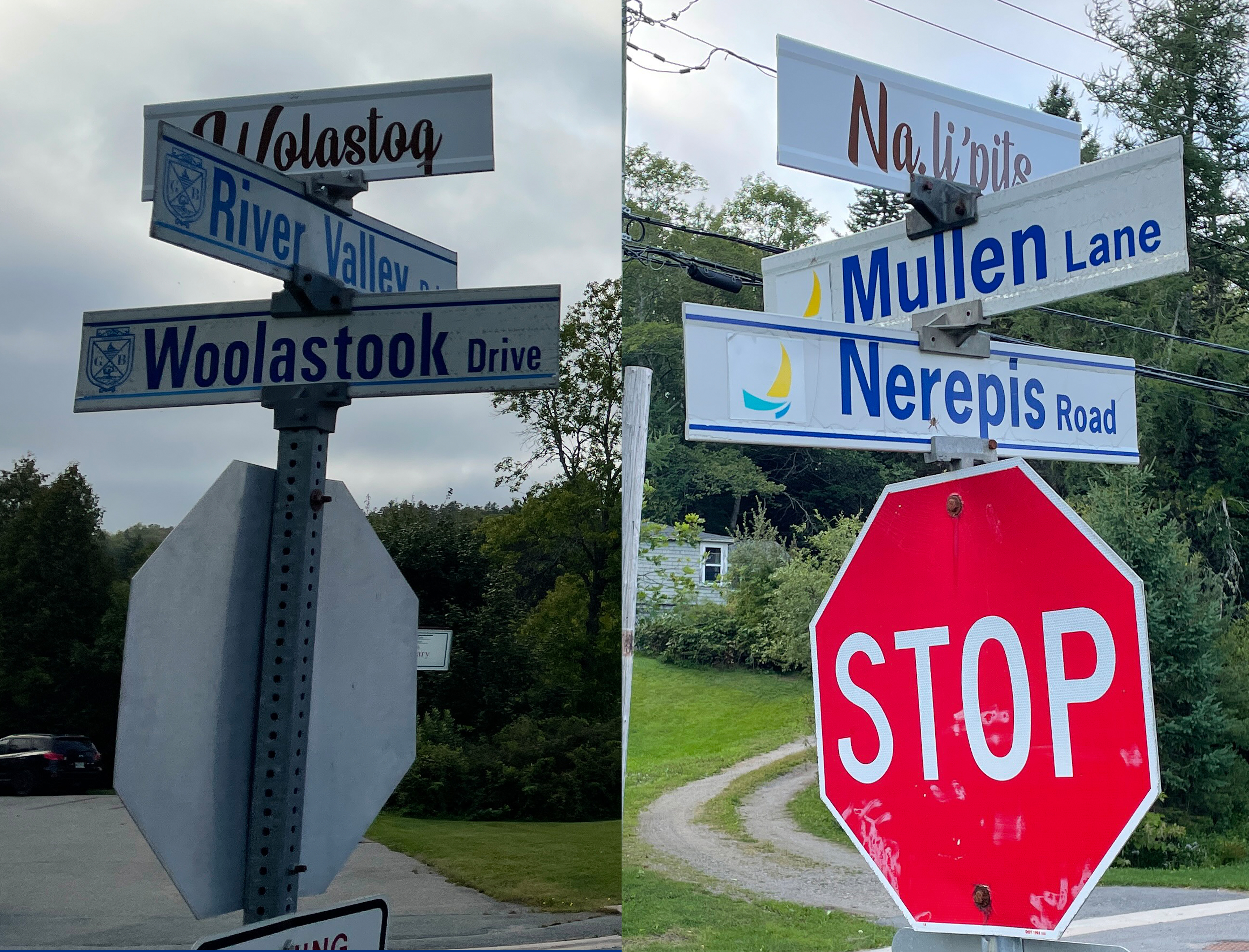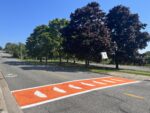The Town of Grand Bay-Westfield remains committed to taking steps on its path towards Truth and Reconciliation
Land Acknowledgement
We respectfully acknowledge that Grand Bay-Westfield exists on the traditional Wolastoqey (WOOL-US-TOOK-WAY) land. The lands of Wabanaki (WAH-BAH-NAH-KEE) people are recognized in a series of Peace and Friendship Treaties to establish an ongoing relationship of peace, friendship and mutual respect between equal nations. The river that runs by our town is known as Wolastoq (WOOL-LUSS-TOOK), along which live Wolastoqiyik (WOOL-US-TOO-GWEEG) – the people of the beautiful and bountiful river. We, the staff and elected representatives, pay respect to the elders, past and present, and descendants of this land.
Indigenous names included on street signs
The Town of Grand Bay-Westfield has installed informational signs to the street name signs for Nerepis Road and Woolastook Drive. The new signs have the traditional Indigenous spelling of the street names. The new signs are in addition to the English version of the street names. For details, visit here.

Town crosswalk painted orange in honour of Truth and Reconciliation
A Grand Bay-Westfield crosswalk on Woolastook Drive near the Veterans Peace Park (Cenotaph), has been painted orange in honour of Truth and Reconciliation. The crosswalk features seven feathers representing the Seven Grandfather Teachings adopted by many Indigenous communities, which are: Love, Respect, Courage, Honesty, Humility, Truth and Wisdom. For details, visit here.

Banners installed on flag poles at Veterans Peace Park (Cenotaph) in recognition of the National Day for Truth and Reconciliation
In recognition of the National Day for Truth and Reconciliation on September 30, banners have been installed on the light poles at the Veterans Peace Park. The banners feature seven feathers representing the Seven Grandfather Teachings adopted by many Indigenous communities, which are: Love, Respect, Courage, Honesty, Humility, Truth and Wisdom.

Illumination of the Veterans Peace Park (Cenotaph) in recognition of the National Day for Truth and Reconciliation
In recognition of the National Day for Truth and Reconciliation on September 30, the Veterans Peace Park will be illuminated in orange for the month of September. For details, visit HERE.
Resource Links
National Centre for Truth and Reconciliation
New Brunswick Aboriginal Peoples Council
Wolastoqey Nation in New Brunswick